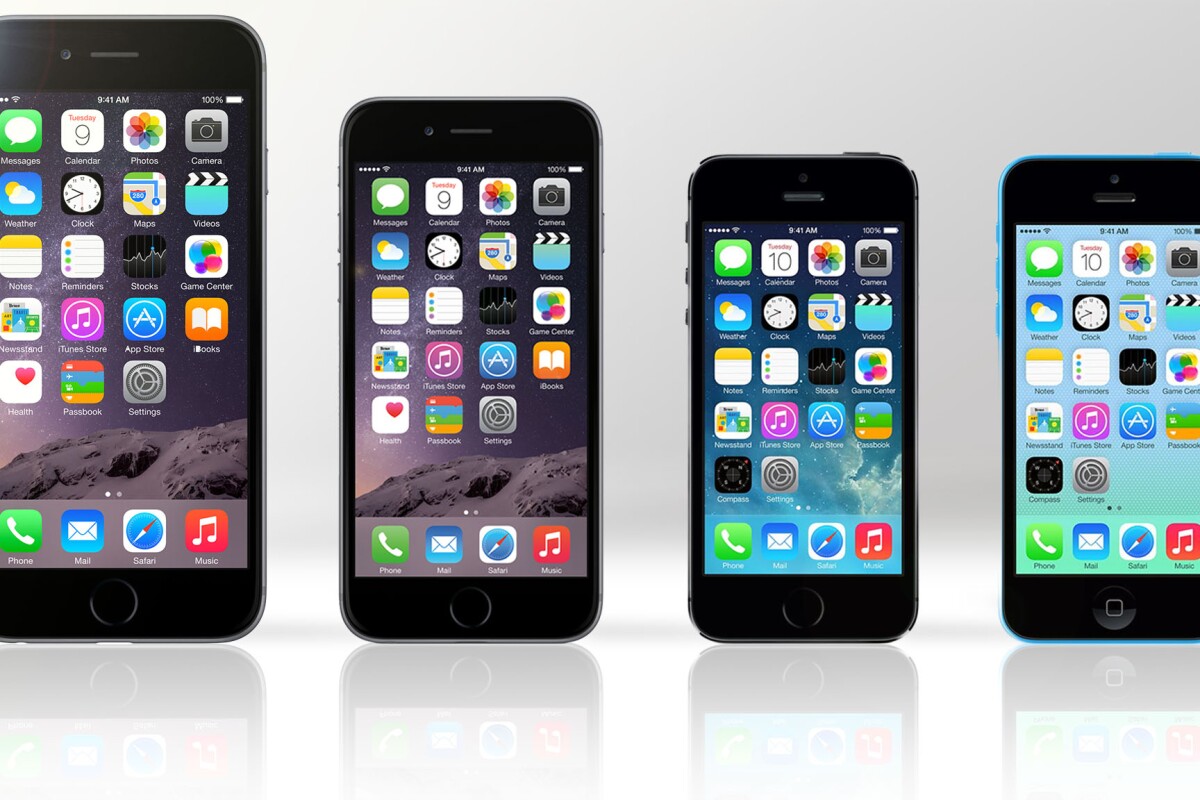For the next year, Apple will be selling four different iPhones. Maybe you're thinking about upgrading and wondering which one is best for you? Let Gizmag lend a hand, as we compare the features and specs of the four iPhones you can buy today.
Before we jump in, here's the list of iPhones that Apple is currently serving up:
For each category, you'll see two rows of images. The iPhones will be ordered exactly as they are in this list, so, if you lose track of which is which, you can just scroll back up here.
Size


The iPhone 6 Plus, Apple's first phablet, towers over both its sibling and its predecessors. It's 15 percent taller than the iPhone 6, and 27 percent taller than the 5s and 5c.
If enormous phablets aren't your thing, then the iPhone 6 might provide the middle-ground you're looking for. It's 11 percent taller than last year's 5s and 5c.
The iPhone 6 is also the thinnest iPhone to date. It's just 3 percent thinner than the 6 Plus, but 9 percent thinner than the already svelte iPhone 5s.
Weight


The 5s is by far the lightest in this bunch, but the iPhones 6 and 6 Plus are still relatively light for their respective sizes.
Build


Most modern Apple devices have aluminum unibody designs, and three of these four fit that bill. The iPhones 6 and 6 Plus are especially striking, with their front panels sloping off into rounded edges.
The iPhone 5c was designed to be a slightly cheaper alternative to the iPhone 5s – marrying the guts of the iPhone 5 to a colorful plastic casing. The 5c doesn't have the same top-of-the-line feel of its aluminum cousins, but it is eye-catching and smooth to touch. If nothing else, it's the spunkiest iPhone to date.
Colors


Three of the four iPhones are offered in the same silver, gold and space gray options (though the tones are a little different on the new models).
The space gray versions have black fronts, while the silver and gold variants have white fronts.
The 5c lets you choose from five pastel-colored backsides. They all have black fronts.
Display (size)


Do you need to own both a phone and a tablet? Well, with the iPhone 6 Plus' huge 5.5-in screen, you might not. If you ever wished you could replace your iPhone and iPad with one Apple device, this is it.
The iPhone 6's 4.7-inch display, though, gives you a nice screen size without leaving such a sizable impression in your hand or pocket. It's easier to hold, but still gives you 38 percent more screen than the 5s and 5c do.
Display (resolution)


On paper, the resolutions of the two iPhone 6 models blend in with a crowd of recent Android flagships. But in experience, they do anything but.
Both have terrific contrast, as well as color range and accuracy. They may not have Quad HD resolution, but, based on our hands-on time with them, they don't need to.
And though the 6 Plus packs the pixels in denser than the 6 does, my eyes didn't notice much of a difference in crispness. The bottom line? They both look terrific.
The 5s and 5c have the same pixel density as the iPhone 6, but I wouldn't put their screens in the same class.
Display (contrast)


This is a big reason for the boost in screen quality with the 6 and 6 Plus, with the new models giving you much better contrast.
Note that these are what Apple lists as the "typical" contrasts for each display.
Fingerprint sensor


All but the 5c include Apple's excellent Touch ID fingerprint sensor, which is integrated into the home button.
Until recently, Touch ID only let you unlock your phone and authorize iTunes purchases. But with iOS 8, third-party apps can now use Touch ID. Password manager apps like 1Password, Dashlane and LastPass make for an especially great fit.
Pay


Starting in October, Apple Pay (sometimes branded as Pay) will let you pay at participating retailers (including McDonald's, Subway, Toys "R" Us and, of course, the Apple Store) by simply holding your iPhone near an Apple Pay terminal. Apple says that the retailer never sees your credit card number, a unique ID is encrypted and stored on the phone's secure element and the numbers are never sent to Apple's servers.
When Apple Pay launches, only the two new iPhones will be (directly) compatible. That's because they're the only two with NFC chips inside – a necessary component for the tap-and-pay service.
The iPhones 5s and 5c (along with the retired iPhone 5) will be indirectly compatible with Apple Pay – but you'll need a paired Apple Watch to make that happen.
Watch compatibility


Speaking of the Apple Watch, all four of the currently available iPhones will play nicely with the upcoming smartwatch.
Camera (megapixels)


Here's another example of numbers on paper not reflecting experience (that's often the case with megapixels). The two iPhone 6 models have terrific cameras, shooting quickly and offering good quality even in lower-lit conditions.
Camera (aperture)


One reason for that is that the iPhone 6 Plus, 6 and 5s have slightly wider apertures.
Dual LED flash


Branded "True Tone" by Apple, the 5s, 6 and 6 Plus have dual-LED flashes. They help to give flash shots a more even and colorful (less whitewashed and blasted) appearance.
OIS


Apart from size, this is one of the only differences between the 6 and 6 Plus. The Plus helps to cut down on the effects of shaky hands by throwing in some Optical Image Stabilization (OIS).
HD video recording


The two iPhone 6 models can record 1080p video at 60 frames per second (fps), though they're set to 30 fps by default.
Slow motion video


Three of the four iPhones also let you record slow-motion video. The two iPhone 6 models, however, record at a higher frame rate than the 5s does.
Battery


Battery capacity only tells you so much – especially when you're looking at different processors and pixel counts. But when we reviewed these four phones, the 6 and 6 Plus outlasted their older counterparts in our streaming test.
Cable
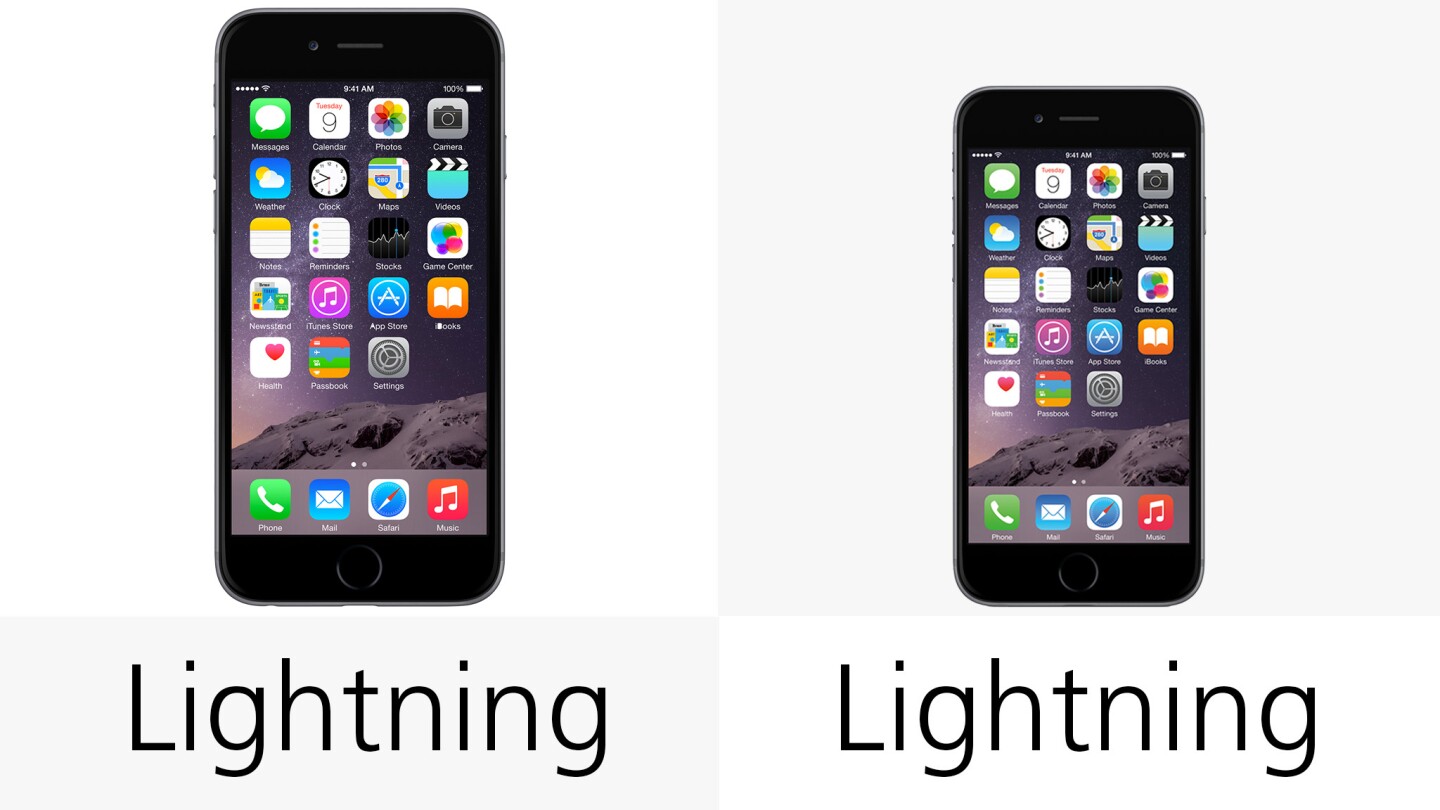

This marks the first time that Apple has completely done away with iPhones that use the old 30-pin connector for data transfers and charging. All four of these use Apple's newer, smaller and reversible Lightning cable.
LTE


With the retirement of the iPhone 4s, this is also the first time that all of the available iPhones support speedy LTE data.
Storage


These are the storage options that are available today. The 5s and 5c, though, were originally available in higher storage tiers that Apple has since retired.
Processor


You can't draw any conclusions about the performance of Apple's chips based on cores and clock speed. On paper, they all look rather mid-ranged (apart from their desktop-like 64-bit architecture).
But in terms of experience, the iPhone 6 and 6 Plus' A8 chip combines with iOS 8 to deliver one of the smoothest experiences I've seen on any mobile device.
RAM


Ditto for RAM, though this does reveal itself a bit when you return to backgrounded apps and browser tabs. They need to reload a bit more often than on some of their Android rivals.
Motion coprocessor


The 6 Plus, 6 and 5s each include a motion coprocessor (either M8 or M7), which lets third-party apps "passively" track your movement in the background.
When you're using this feature, battery life can take a noticeable hit, but it's minor compared to the drop in uptimes you'd see when tracking all-day steps on other phones.
One-handed mode

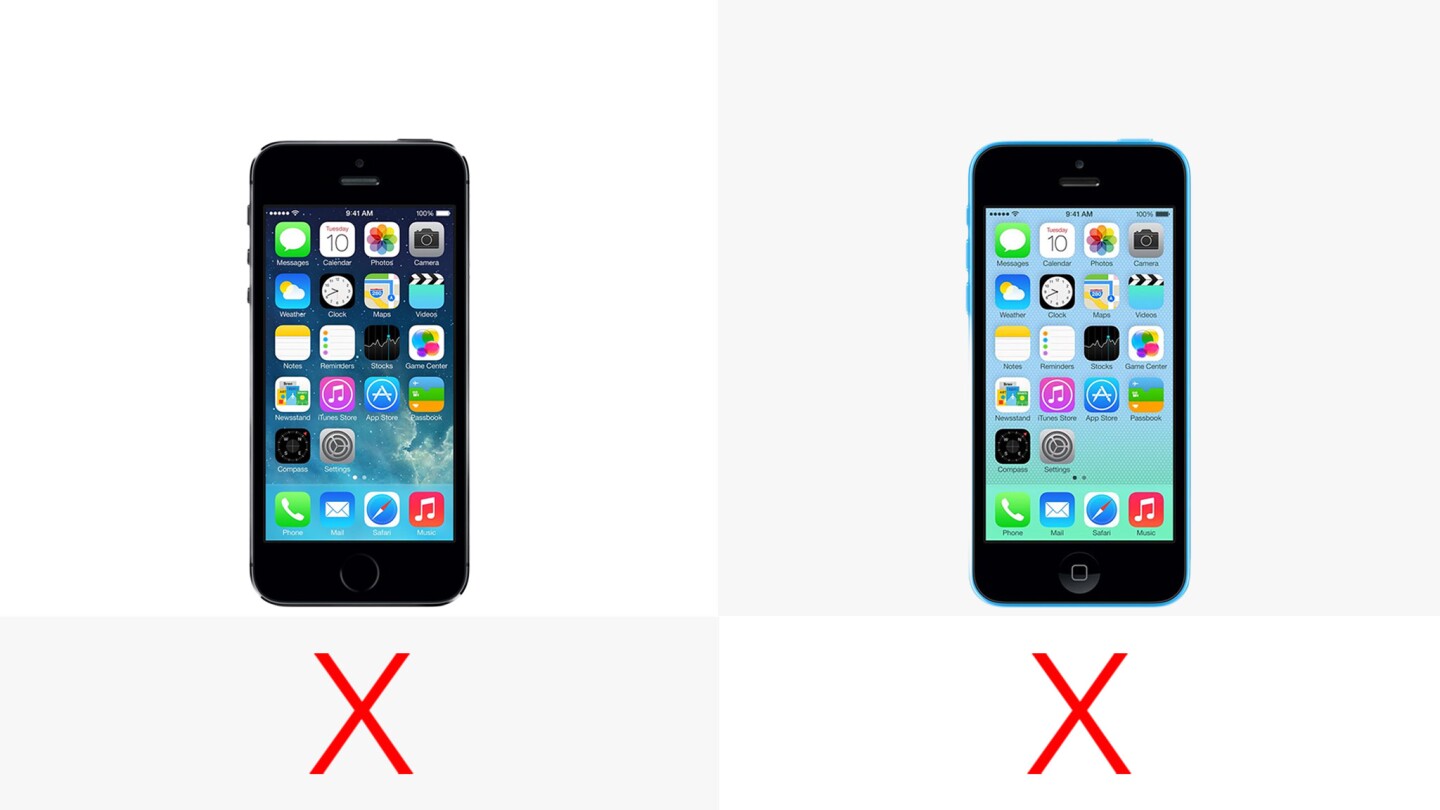
Apple threw in a one-handed feature called "Reachability" that makes it easier to use the newer iPhones with one hand. By lightly tapping their Touch ID sensors two times, the top of the screen slides down to the bottom. You can then tap anything that's out of reach, and double-tap the sensor again to slide things back up.
SIM card size
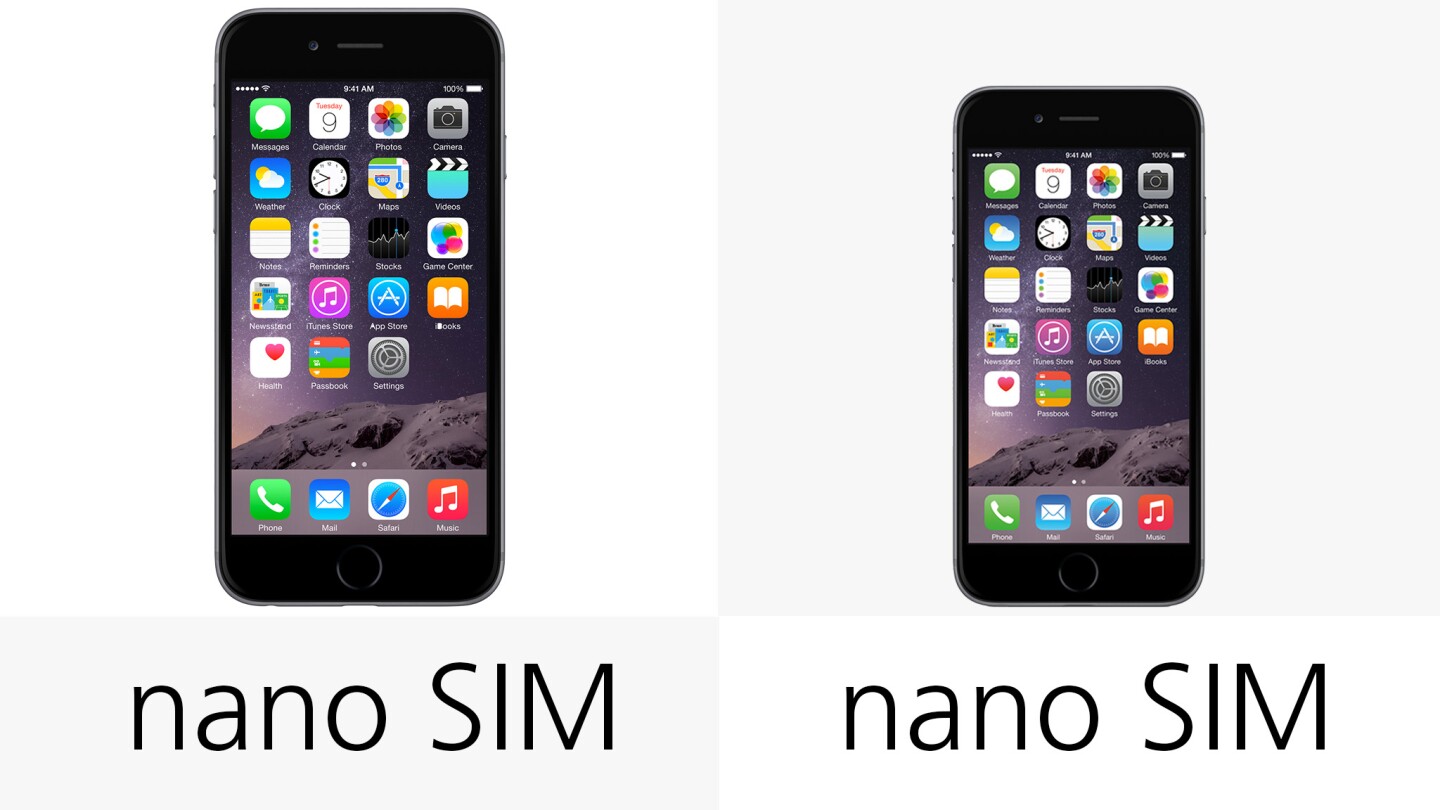
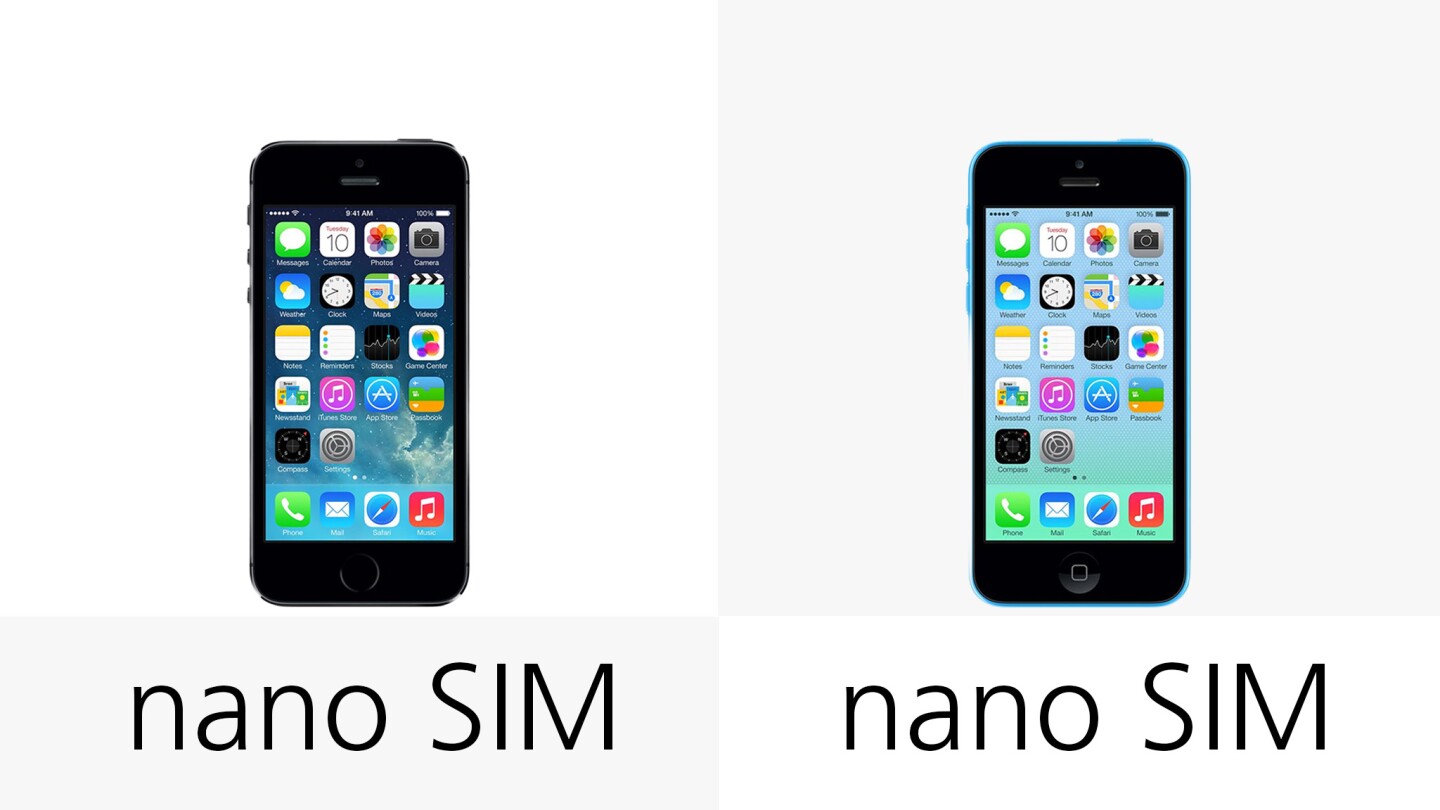
With the iPhone 4s now living in the Shady Pines Retirement Home for iPhones, Apple also did away with the last iPhone to use a micro-SIM. All four current models use the tiny nano-SIM standard.
Power button location


Apple moved the power/sleep button to the side (upper right) of the two iPhone 6 models. On every previous iPhone (including the 5s and 5c), the button had been on the right side of the top edge.
Software


None of the current models got left behind with Apple's latest software. All four run iOS 8, which brings goodies like third-party keyboards, Notification Center widgets, faster Siri and app extensions.
Release date


None of these iPhones are more than a year old, though the iPhone 5c is essentially the two-year-old iPhone 5 dressed in plastic, pastel-colored clothing.
Starting price (full retail)


The 6 Plus has the most expensive starting price we've seen from any iPhone. Considering how much bigger its screen is, that shouldn't be too surprising.
Starting price (on-contract)


If you're buying your iPhone subsidized with a two-year contract, then their starting prices line up in the same descending order. Just remember that the upfront price is small potatoes compared to what you'll fork over during the next two years.
More
For a closer look at each model, you can check out Gizmag's full reviews of the current crop of iPhones:
Do you have any buying tips based on your experience with these iPhones? Or maybe you've upgraded to one of the new models, and have some thoughts on how it compares to older ones? Why not drop us a line in the comments below.
